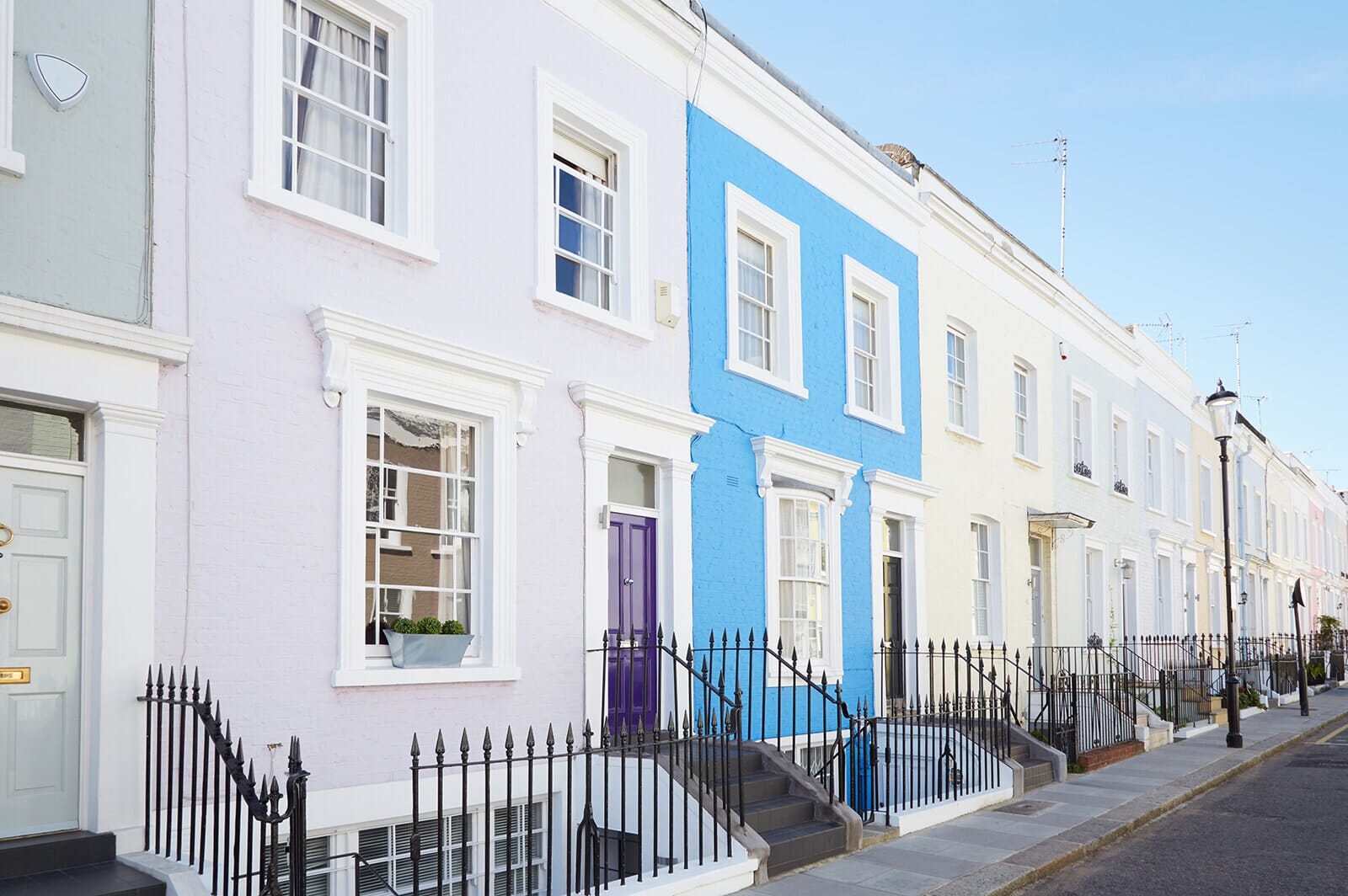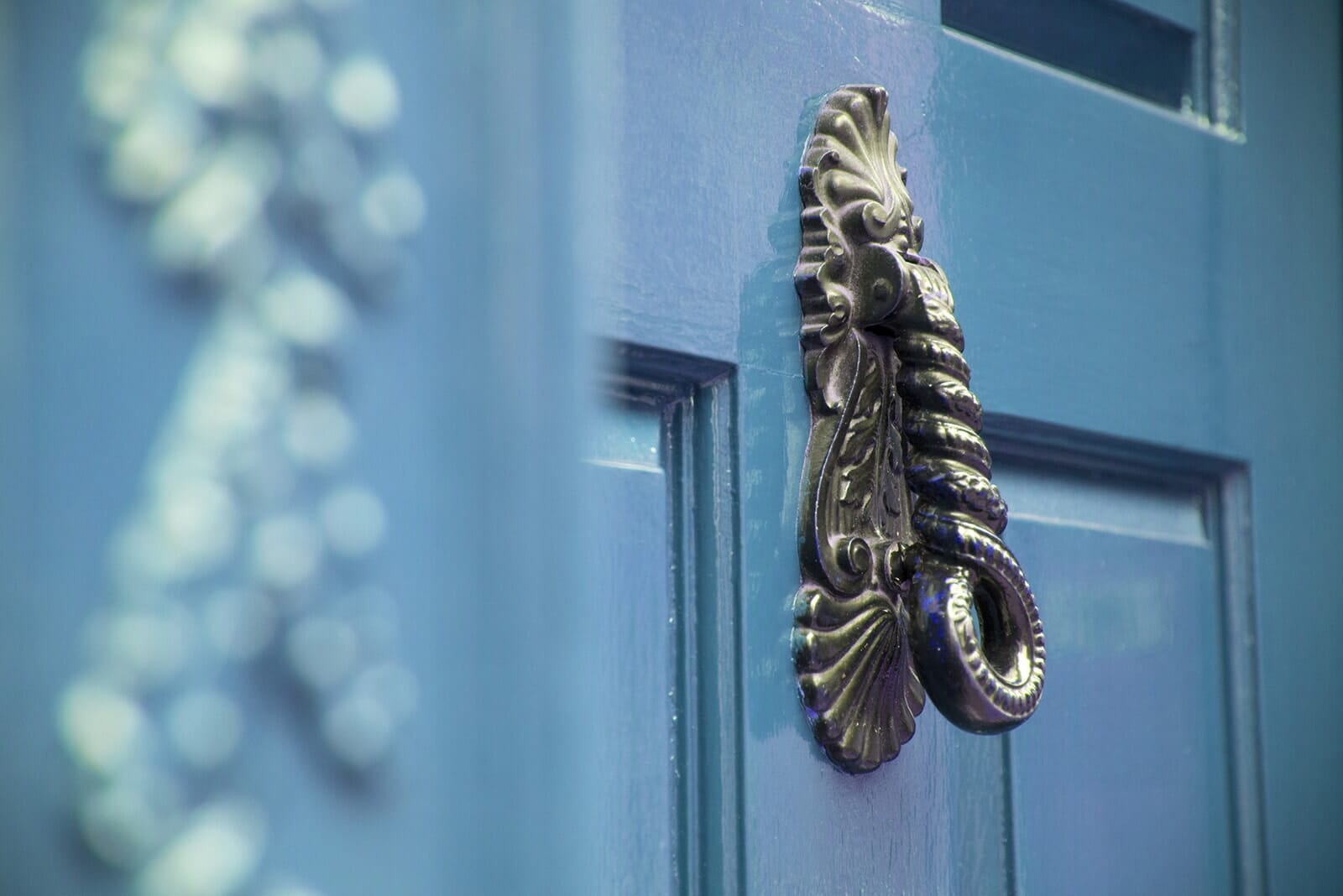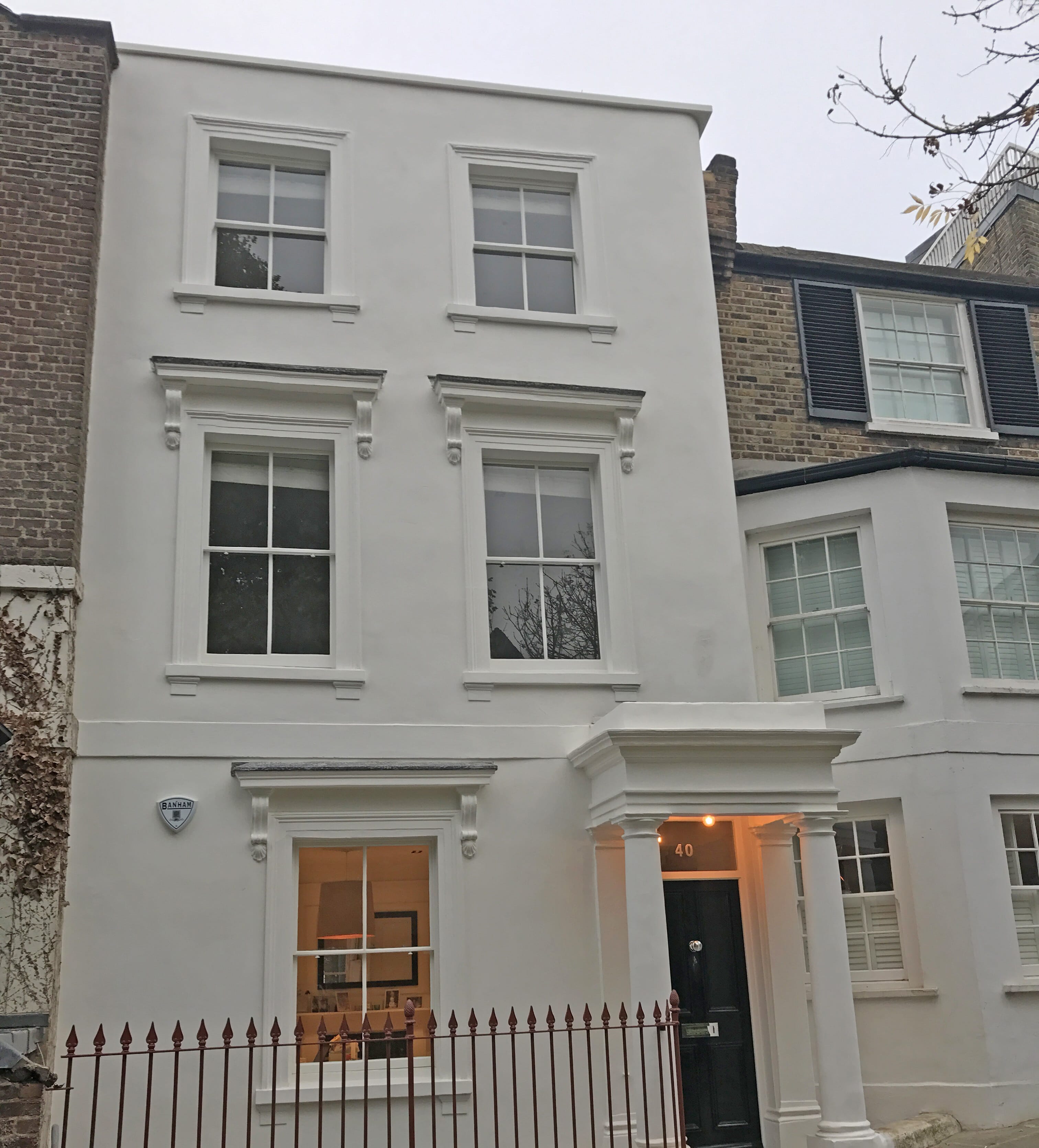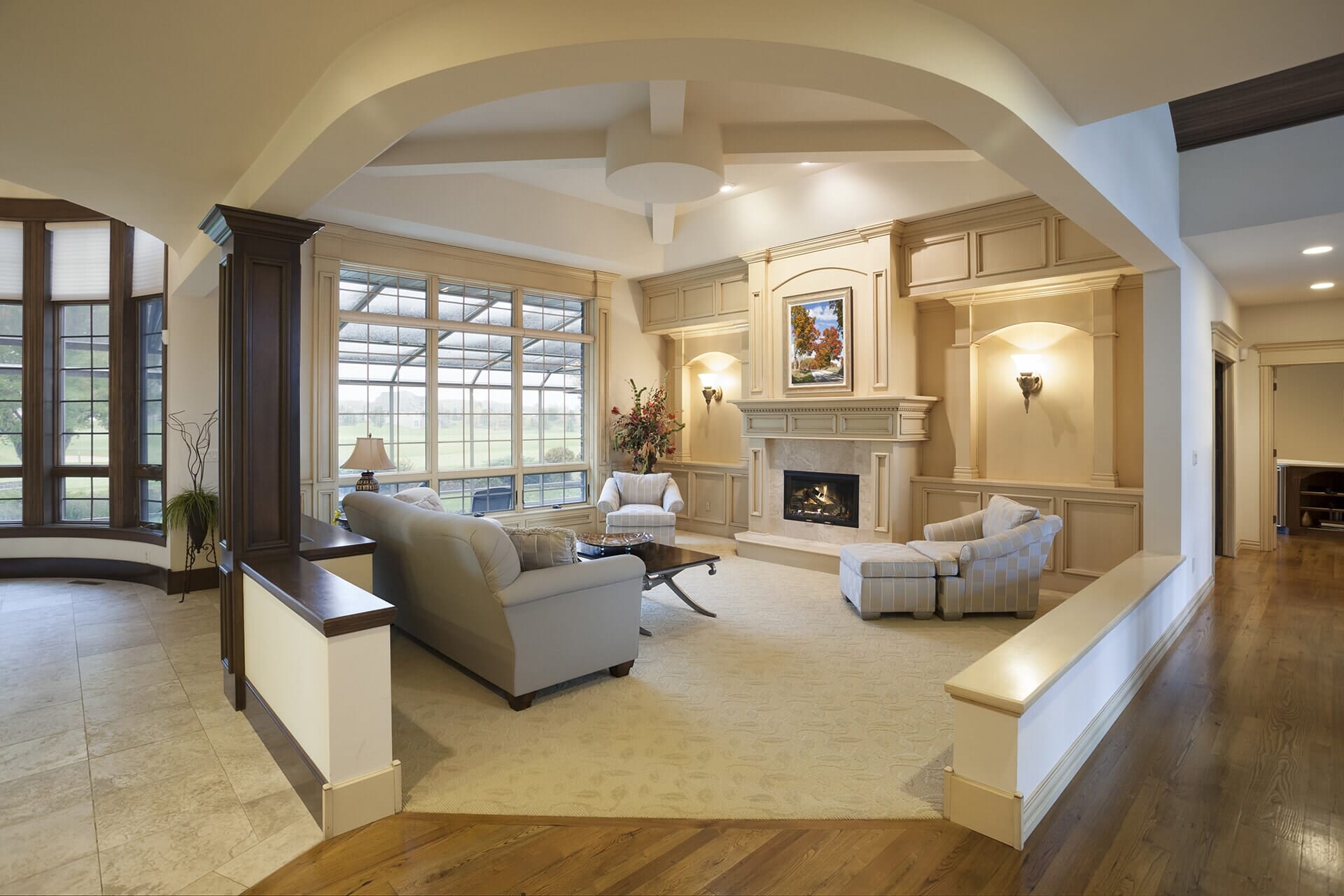
What alterations can I make to a Grade II Listed building?
It is possible to modernise a Grade II listed property, but you must play by the rules. These buildings are listed for a reason: they hold special historic or architectural interest that it is important to conserve. Laws govern what you can and can’t do to a listed building, both internally and externally.
Most homes fall into the Grade II listing category, which is slightly less rigorous than a Grade I listing. As a general rule, you can maintain your property using like-for-like materials and traditional methods without prior consent – for example, careful repairs to a sash window or replacing modern appliances in a kitchen. However, tread carefully. Victorian fittings in your bathroom may be part of the listing, and while you can refresh modern paint, be careful not to peel away historic layers. Even garden features, like an old tree or a tumbled-down wall, could be part of the listing and require special consent to alter or repair.
Today, planners often favour maintaining a clear divide between old and new when extending a listed building. This approach celebrates the original structure while allowing modern elements to complement it. If you’re unsure about what is permissible, err on the side of caution and seek professional advice.
What is a Grade II Listed Building?
Grade II listed buildings are structures recognised for their special architectural or historic interest. They make up 92% of all listed properties in England and are a vital part of the nation’s heritage. Many of these buildings date back centuries and showcase unique craftsmanship, design, and historical importance.
The listing applies to more than just the external facade. It typically includes:
- Interior Features: Original staircases, decorative plasterwork, fireplaces, and even floorboards may be protected.
- External Features: Windows, doors, walls, roofs, and associated structures like outbuildings or garden features.
- The Curtilage: Land surrounding the property, including trees, fences, or garden walls, may also fall under the listing.
The goal of listing is to ensure that these properties are preserved for future generations. Any alterations that could affect the character of the building require listed building consent.
What Alterations Are Possible?
Internal Alterations
Can you change the inside of a Grade II listed building? Yes, but any changes must respect the property’s historic character. Listed building consent is typically required for:
- Reconfiguring Layouts: Removing or altering walls to create open-plan spaces requires approval. For example, in a Grade II listed property restoration in Hampstead Heath, London, Property Conservation Co. carefully reconfigured internal layouts, restored period features, and added modern conveniences like a new family bathroom while preserving the property’s historic charm (see case study).
- Restoring Features: Replacing or restoring fireplaces, panelling, or decorative plasterwork must align with the property’s historical context.
- Modernising Kitchens and Bathrooms: Updates are possible but must avoid altering original materials or historic layouts without consent.
External Renovations
Grade II listed buildings often feature unique external elements like sash windows, stucco facades, and lime-rendered walls. Alterations might include:
- Window Repairs: Overhauling sash windows, as seen in a Grade II listed project in Islington, requires consent to ensure period authenticity (see case study).
- Roofing: Installing a new roof with traditional materials, such as Welsh slate, preserves the property’s historic aesthetic while enhancing durability.
- Facades and Decorations: External redecoration or repairs should match original colours and materials. Even repainting in a new colour may require approval.
Extensions and Structural Changes
Modern extensions to listed buildings are possible but must adhere to conservation guidelines. Planners often prefer a clear distinction between old and new, using complementary modern materials. Extensions might involve:
- Creating additional living spaces while maintaining the property’s historical integrity.
- Installing structural beams to support modern layouts, as demonstrated in the Hampstead Heath renovation.
For inspiration, visit our case studies showcasing our work.
What Alterations Can Be Made Without Consent?
Certain minor works and repairs can often be carried out on a Grade II listed building without listed building consent, provided they do not alter the character or historic fabric of the property. Examples include:
- Routine Maintenance: Replacing modern appliances, repairing leaks, or cleaning existing features using appropriate methods.
- Like-for-Like Repairs: Fixing a sash window or roof using identical materials and methods to the original construction.
- Internal Painting and Decorating: Repainting walls with colours and finishes that do not detract from the building’s character. However, painting over historically unpainted surfaces usually requires consent.
- Repointing: Small-scale repairs to mortar joints using appropriate materials like lime mortar.
- Landscaping: Garden maintenance such as trimming hedges or replanting flower beds, as long as no listed garden features are altered.
Always check with your local conservation officer or a heritage expert if you are unsure, as even minor changes might require approval depending on the specifics of your property.
Understanding the Process of Listed Building Consent
When Is Consent Required?
Consent is mandatory for alterations that affect a listed property’s character, including:
- Removing or altering walls.
- Replacing windows or doors.
- Adding new structures like extensions or conservatories.
- Changing roofing materials or layouts.
The Consent Process
Applying for listed building consent involves submitting detailed plans to your local planning authority. These should include:
- A design and access statement.
- Heritage impact assessments.
- Detailed drawings and specifications.
Working with conservation experts, such as the team at Property Conservation Co., ensures compliance and simplifies the process. Our team offers comprehensive support, including preparing detailed heritage impact assessments, liaising with local planning authorities, and using our extensive knowledge of traditional construction methods to preserve and enhance the character of your property. With over 35 years of experience, we guide you through each step to make the process as seamless and stress-free as possible.
Further Resources for Guidance on Grade II Listed Building Alterations
If you’re unclear about what is permissible or not, it’s always best to err on the side of caution and seek advice. One of the best sources is the Listed Property Owners’ Club (LPOC), which holds an annual show in London and was set up to help owners of listed properties understand what works they are and aren’t allowed to do. Historic England provides a Listed Property Owners Guide, which outlines what alterations you can and cannot make to listed properties.
For further guidance, consult resources such as the National Heritage List for England to explore your building’s specific listing details.
Why Choose Property Conservation Company?
With over 35 years of experience in Cheltenham, the Cotswolds, and London, Property Conservation Company specialises in the restoration and modernisation of Grade II listed buildings. What sets us apart is our dedication to craftsmanship, attention to detail, and client satisfaction. Here’s why homeowners trust us with their cherished properties:
- Family-Run Business: Built on honesty, loyalty, and trust, we treat every project as if it were our own, delivering a personalised and attentive service.
- Expert In-House Craftsmen: Our skilled team combines traditional construction methods with modern techniques to ensure exceptional results.
- No Sub-Contractors: All work is completed by our dedicated in-house team, ensuring consistent quality and reliability.
- Insurance-Backed Guarantee: Every project comes with a ten-year insurance-backed guarantee for added peace of mind.
- Assigned JCT Contracts: We operate with transparency and accountability, using fixed-price JCT contracts to give our clients confidence and clarity.
- Considerate Construction: We maintain clean, tidy sites and uphold a respectful approach to preserving your property and its surroundings.
Get in Touch
If you’re considering restoring or renovating your Grade II listed property, Property Conservation Co. is here to help. Contact us for an initial consultation and free no-obligation quote. Let’s bring your vision to life, preserving the unique character of your home while enhancing its functionality for modern living.
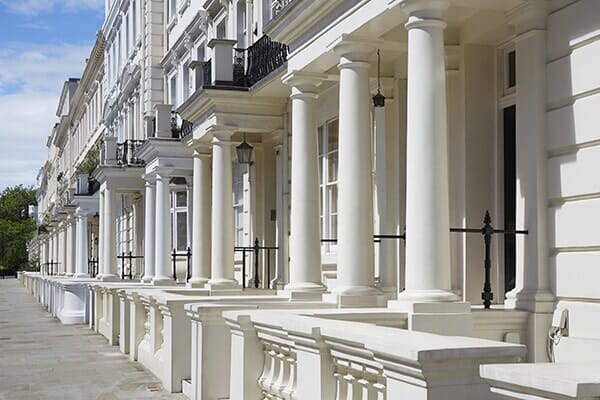
Author: Peter Little (CEO)
This article was first published on 16th May 2017
(Updated 8th January 2025)
Experts in sympathetic period property restoration
Get a FREE initial quote